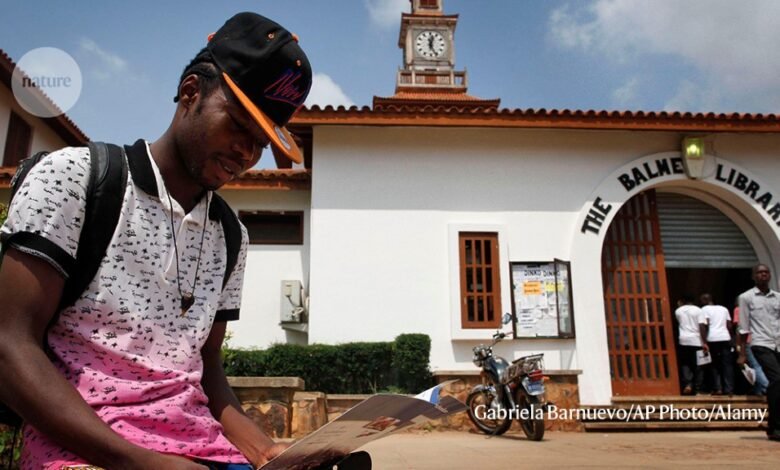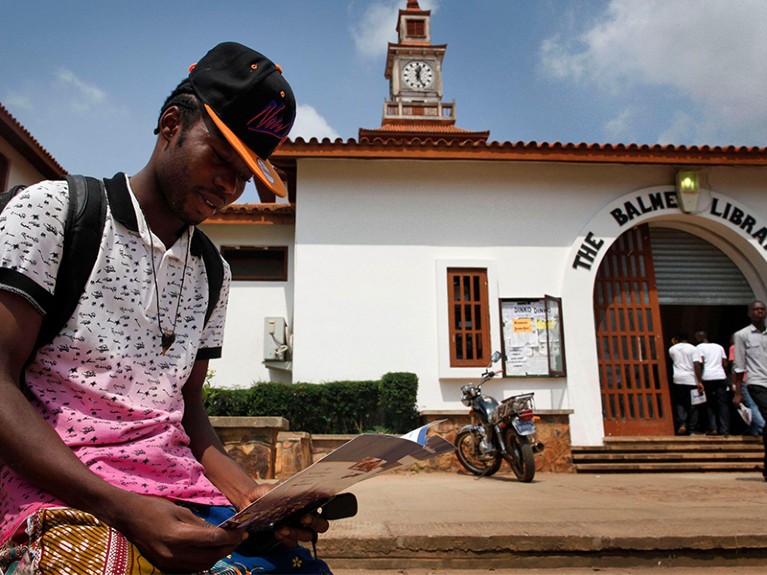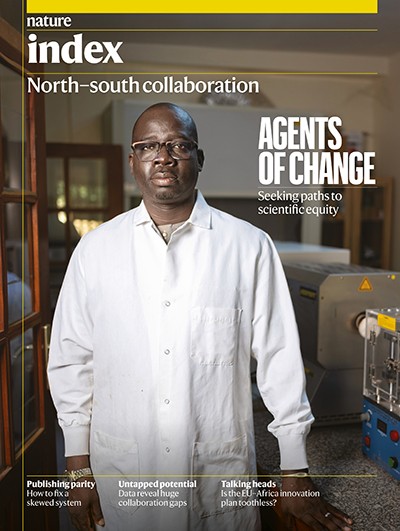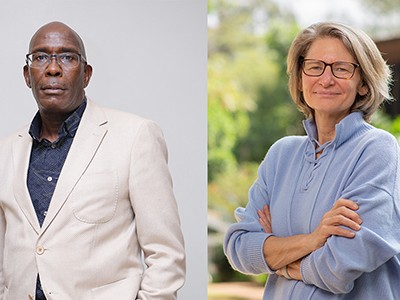

Researchers at the University of Ghana find themselves caught between needing to publish in international journals and the necessity of supporting African publications.Credit: Gabriela Barnuevo/AP Photo/Alamy
Over the past decade, the importance of improving equity in global research collaborations has gained increased attention worldwide. However, data published last week by the Nature Index in its first-ever supplement on global north–south research collaborations show just how much work still needs to be done to bridge a yawning gap (see go.nature.com/3rs5xdm).
Across the 82 natural-science journals tracked by the index, just 2.7% of articles published between 2015 and 2022 featured collaborations between scientists in higher-income and lower-income countries. Even in these articles, there were, on average, three authors in richer countries for every one author in a poorer country. And the number of articles that involved collaborations between researchers exclusively in poorer nations was just 24 — out of a total of some half a million articles.
Nature Index 2023 North–south collaboration
The Nature Index supplement divides countries into two categories on the basis of four income groups used by the World Bank: the global north, which includes high-income and upper-middle-income countries, and the global south, comprising lower-middle-income and low-income nations.
In articles featuring north–south collaboration, almost half of the author contributions came from just five wealthy countries — China, France, Germany, the United Kingdom and the United States. Among global-south countries, India’s contribution represented 15% of all north–south research. By contrast, 42 African countries had a collective contribution amounting to less than 20% of that of India.
For many, it will come as no surprise that richer countries dominate collaborations. But the extent of this inequity must be a wake-up call for funders and publishers, which should not allow the status quo to continue.
The Nature Index tracks publications and authorships, focusing on a select tranche of journals in which, according to its own data, global-south researchers struggle to publish. It needs to recognize that quality research from the global south might not be reaching this subset of publications, and take steps to address the imbalance. The index is already in the process of broadening the scope of the subjects it covers, and as part of this will consider the publications and other venues through which global-south researchers share their work.
How to level the global publishing playing field
Notably, until earlier this year, the Nature Index focused on only the natural sciences, and its data reflect that. Separate data from the Digital Science Dimensions database show relatively more north–south collaboration in the health sciences and engineering, which the index team hopes to assess in future.
This caveat aside, the findings reported in the Nature Index supplement represent the reality for many scientists in lower-income countries. In Who Counts, an open-access study published as a book at the start of this year, social scientist David Mills and his co-authors relate the experiences of researchers at two universities in Ghana trying to navigate the international science-publishing system. They point out the pressure researchers feel under to publish internationally to develop their careers, and describe the higher costs of this, in terms of time and resources. The alternative is to support local journals and publishing, but often African journals are not recognized by international scholarly databases. The authors call this “bibliometric coloniality”: higher-income countries setting the rules for what does and doesn’t ‘count’ as measured research outputs.
This account chimes with the thinking behind the Africa Charter for Transformative Research Collaborations. This was launched in July by a coalition of organizations with interests in higher education and research on the continent. Signatories, which include the African Academy of Sciences and the Association of African Universities, want publishers to do more to recognize research and collaboration by the continent’s scientists, and to allow countries in the global south to drive their own knowledge creation, rather than become trapped in an agenda set by richer nations.
Four global-south researchers making cross-border collaborations count
There are also ways in which the existing data could be examined and presented to give research institutions and funders the tools they need to target and reward research that shifts the north–south imbalance. It is crucial that analyses distinguish between major global-south hubs that already have reputation and funding advantages and lesser-known institutions and countries where capacity needs building. And publishers handling papers resulting from north–south collaborations should ensure that authorship conventions don’t stop researchers in poorer nations getting sufficient credit for their work.
Research and collaboration are widespread across low- and lower-middle-income countries, but, all too often, one of the greatest struggles for those involved is gaining international recognition for their work. Funders must give more priority to projects conceived and led by researchers in the global south, and must provide more training partnerships that help to build, rather than drain, resources in lower-income countries. And more journals must enact policies to prevent ‘helicopter’ or ‘parachute’ research, whereby scientists from rich countries visit poorer ones and exploit local expertise or resources.
Databases such as the Nature Index that report on north–south collaborations must find ways to measure progress in the representation of researchers in the global south, alongside a broadened subject and publication scope. This could provide a ‘feedback loop’ for governments and funders to reward those projects helping to move the dial in favour of global-south science.
Source link







